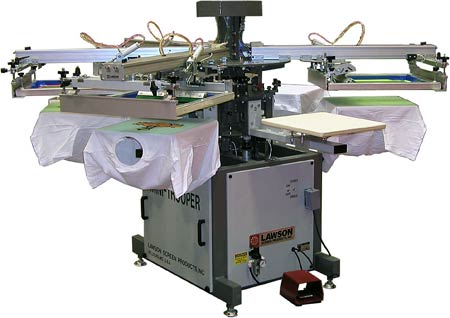Screen printing
As its name implies, this printing technique relies on a screen, which is a woven piece of fabric. Certain areas of this mesh are coated with a non-permeable material. In the remaining open spaces ink can be pushed through the mesh onto a substrate. The advantage of screen printing is that the surface of the recipient does not have to be flat and that the ink can adhere to a wide range of materials, such as paper, textiles, glass, ceramics, wood, and metal.
The image below shows a screen printing press that is used to print t-shirts.
 Increasingly screen printing is being replaced by digital printing.
Increasingly screen printing is being replaced by digital printing.
Additional printing processes
- Letterpress – Once a dominant printing technique, letterpress is now used for business cards, wedding invitations,…
- Flocking – used to add a (colored) velvet-like texture to paper, textiles, etc.
- Pad printing – used to print on 3-dimensional surfaces.
- Intaglio – nowadays mainly used for used stamps and paper currency.
- Thermography – This is more of a finishing process than an actual printing process. It produces raised lettering on the printed side of the paper and is used for wedding invitations, letterheads, business cards,…
